Retailers spend their lives trying to shift products out of their stores, but what happens if they need to get them back? While product recalls can be a nightmare for manufacturers, this needn't be so for retailers, provided that they act quickly.
In the case of a product recall, Spar gets straight down to business. "Central office and regional distribution centres liaise and inform retailers," explains marketing director Susan Darbyshire. "One central point ensures consistency of message."
James Hall, controller of Bestway symbol group Best-one, is equally confident when handling such situations. "All our suppliers are well organised in communicating product problems to us - everything is immediate and urgent," he says. "To ensure that the message gets passed on [to retailers] as quickly as possible, notices on recalled products are posted at the entrance reception in cash and carry depots.
"Best-one's business development executive [BDE] network is also made aware by a direct telephone call and an email from the central office. BDE representatives are in touch with all retailer members in their area on a regular basis," he says. "In addition to this we always ensure that an announcement is highlighted in our weekly bulletin, which is posted to members."
Retailers are sometimes required to return stock directly to the supplier, in which case it must be put in a safe place until it can be sent back. Best-one's Hall says: "In this instance, it's important that all stock is removed immediately from sale; stored separately in a secure location; and clearly marked 'not for sale'. In the case of chilled items, these should not be left in the shop floor fridge, but in the store room, in a back-up fridge."
Putting staff in the picture is also vital to ensure a smooth recall operation, explains Pinder Cheema, who runs Malcolm's (Costcutter) in Coventry. "We call staff into a meeting and tell them about the problem," he says.
Clue up your customers
Notifying consumers of a problem with products is just as important as dealing with the stock itself, notes Pinder. "The worst incident of poor communications I can think of was with a frozen food company, which had a problem with a large number of products. It failed to communicate the issue properly to consumers; people got scared and stopped buying the product and we delisted it due to poor sales.
"We've now started stocking the company's products again because it has been through a major re-branding, but it could have saved a lot of time and money if it had been straight in the first place."
Spar takes no risks when it comes to communicating with customers. "Any Spar stores that stock a recalled product will display a poster," says Darbyshire. "This will ask any customers who have bought the product with the affected date codes to return it for a full refund."
Best-one is also quick to tell customers what's going on. "Notices should be posted up in the shop, near to the cash tills and replacement stock or refunds provided," says Hall.
Malcolm's has a similar process. "We put up a disclaimer notice explaining to customers what has happened," says Pinder. "Alternatively, if we have a batch of product that hasn't been affected by the recall, then we'll put up a notice to that effect to stop customers from worrying."
If a retailer is required to make their own recall notice, which could well be the case for an independent retailer, then there are a few things to take into account, claims Chris Woodcock, managing director of risk management company Razor. "In-store notices need to be clear and simple in identifying precisely which product or batches are affected - and which are not," says Woodcock. "They should be prominent - at entry and exit points and at the tills. They also need to be clear on whether this is a precautionary measure or an actual threat and what the consumer should do about the problem and who they can contact for advice."
Another factor to take into account when using signs is the font size, advises Woodcock. "The Royal National Institute for the Blind recommends the use of 14-point typeface as the minimum for any text aimed at elderly people," she says. "Also bear in mind that minority groups may be part of your target audience - so consider language variations and visuals to help identify the product.
"Sometimes it helps to regard the recall as if it were a marketing exercise, so you are trying to make your recall notice or announcement as compelling as any advert."
The personal touch
Any retailers who keep detailed customer records, either in their own stores or via head office, can use this as a way of telling customers about a recall, claims Woodcock. "Writing to, phoning, or emailing your customers is the most precise way of targeting your recall, and adds a personal touch to the recall programme," she says.
Pinder is also keen for customers to be treated in a more personal way. If a customer comes in with a problem product, then he is quick to adopt this approach to show them that they are being taken seriously. "We phone Nisa's quality assurance department and report the issue straight away. We put the customer on the phone to Nisa to reassure them that something is being done about the issue," he says. "Following on from this, the Nisa supplier will investigate and let the customer know their findings."
If a customer has injured themselves as a result of buying a damaged product in your store, then don't be afraid to get in touch with them advises Des Cross, head of retail at insurance firm RSA. "Send distressed customers flowers and sympathy - don't keep your distance," says Cross. "If the customer feels that you really care, then there's a good chance that they won't want to take further action."
In fact, play your cards right and a recall can work to your advantage, he adds. "In practice, a product recall can be a good experience for a retailer because if it is handled well, then it can really help you to earn respect from your suppliers and increase customer confidence," claims Cross. "It's also a good way of simply talking to customers and letting them know that you care for their wellbeing."
In the case of a product recall, Spar gets straight down to business. "Central office and regional distribution centres liaise and inform retailers," explains marketing director Susan Darbyshire. "One central point ensures consistency of message."
James Hall, controller of Bestway symbol group Best-one, is equally confident when handling such situations. "All our suppliers are well organised in communicating product problems to us - everything is immediate and urgent," he says. "To ensure that the message gets passed on [to retailers] as quickly as possible, notices on recalled products are posted at the entrance reception in cash and carry depots.
"Best-one's business development executive [BDE] network is also made aware by a direct telephone call and an email from the central office. BDE representatives are in touch with all retailer members in their area on a regular basis," he says. "In addition to this we always ensure that an announcement is highlighted in our weekly bulletin, which is posted to members."
Retailers are sometimes required to return stock directly to the supplier, in which case it must be put in a safe place until it can be sent back. Best-one's Hall says: "In this instance, it's important that all stock is removed immediately from sale; stored separately in a secure location; and clearly marked 'not for sale'. In the case of chilled items, these should not be left in the shop floor fridge, but in the store room, in a back-up fridge."
Putting staff in the picture is also vital to ensure a smooth recall operation, explains Pinder Cheema, who runs Malcolm's (Costcutter) in Coventry. "We call staff into a meeting and tell them about the problem," he says.
Clue up your customers
Notifying consumers of a problem with products is just as important as dealing with the stock itself, notes Pinder. "The worst incident of poor communications I can think of was with a frozen food company, which had a problem with a large number of products. It failed to communicate the issue properly to consumers; people got scared and stopped buying the product and we delisted it due to poor sales.
"We've now started stocking the company's products again because it has been through a major re-branding, but it could have saved a lot of time and money if it had been straight in the first place."
Spar takes no risks when it comes to communicating with customers. "Any Spar stores that stock a recalled product will display a poster," says Darbyshire. "This will ask any customers who have bought the product with the affected date codes to return it for a full refund."
Best-one is also quick to tell customers what's going on. "Notices should be posted up in the shop, near to the cash tills and replacement stock or refunds provided," says Hall.
Malcolm's has a similar process. "We put up a disclaimer notice explaining to customers what has happened," says Pinder. "Alternatively, if we have a batch of product that hasn't been affected by the recall, then we'll put up a notice to that effect to stop customers from worrying."
If a retailer is required to make their own recall notice, which could well be the case for an independent retailer, then there are a few things to take into account, claims Chris Woodcock, managing director of risk management company Razor. "In-store notices need to be clear and simple in identifying precisely which product or batches are affected - and which are not," says Woodcock. "They should be prominent - at entry and exit points and at the tills. They also need to be clear on whether this is a precautionary measure or an actual threat and what the consumer should do about the problem and who they can contact for advice."
Another factor to take into account when using signs is the font size, advises Woodcock. "The Royal National Institute for the Blind recommends the use of 14-point typeface as the minimum for any text aimed at elderly people," she says. "Also bear in mind that minority groups may be part of your target audience - so consider language variations and visuals to help identify the product.
"Sometimes it helps to regard the recall as if it were a marketing exercise, so you are trying to make your recall notice or announcement as compelling as any advert."
The personal touch
Any retailers who keep detailed customer records, either in their own stores or via head office, can use this as a way of telling customers about a recall, claims Woodcock. "Writing to, phoning, or emailing your customers is the most precise way of targeting your recall, and adds a personal touch to the recall programme," she says.
Pinder is also keen for customers to be treated in a more personal way. If a customer comes in with a problem product, then he is quick to adopt this approach to show them that they are being taken seriously. "We phone Nisa's quality assurance department and report the issue straight away. We put the customer on the phone to Nisa to reassure them that something is being done about the issue," he says. "Following on from this, the Nisa supplier will investigate and let the customer know their findings."
If a customer has injured themselves as a result of buying a damaged product in your store, then don't be afraid to get in touch with them advises Des Cross, head of retail at insurance firm RSA. "Send distressed customers flowers and sympathy - don't keep your distance," says Cross. "If the customer feels that you really care, then there's a good chance that they won't want to take further action."
In fact, play your cards right and a recall can work to your advantage, he adds. "In practice, a product recall can be a good experience for a retailer because if it is handled well, then it can really help you to earn respect from your suppliers and increase customer confidence," claims Cross. "It's also a good way of simply talking to customers and letting them know that you care for their wellbeing."
How to alert your customers
l Store posters
l Store window displays
l Print-out on receipts
l Local media coverage via a news alert - press and radio
l Website announcements
Source: Razor
l Store posters
l Store window displays
l Print-out on receipts
l Local media coverage via a news alert - press and radio
l Website announcements
Source: Razor
Who to contact
It always makes sense to have an audience checklist ready, divided into internal and external, says risk management company Razor.
Internal
Employees
Group and head office alert system
Other stores
External
Food Standards Agency
Regular customers
New customers
Suppliers
Trading Standards local office
Police - in the case of any suspected malicious contamination
Media - trade and consumer news
The Association of Convenience Stores
It always makes sense to have an audience checklist ready, divided into internal and external, says risk management company Razor.
Internal
Employees
Group and head office alert system
Other stores
External
Food Standards Agency
Regular customers
New customers
Suppliers
Trading Standards local office
Police - in the case of any suspected malicious contamination
Media - trade and consumer news
The Association of Convenience Stores









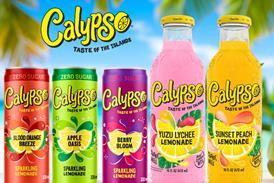










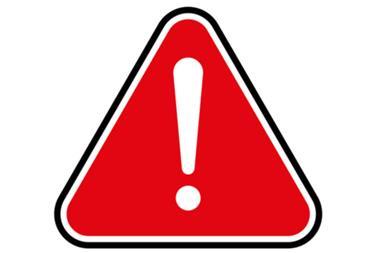
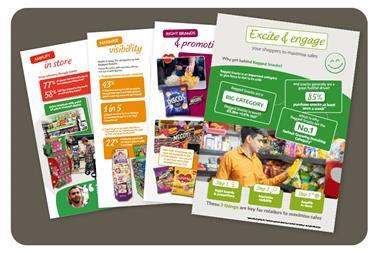
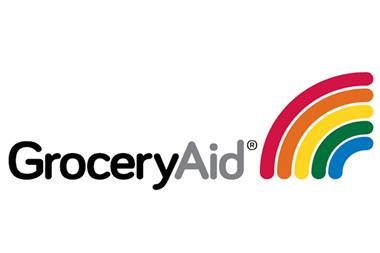
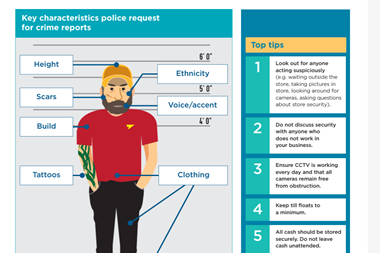


No comments yet